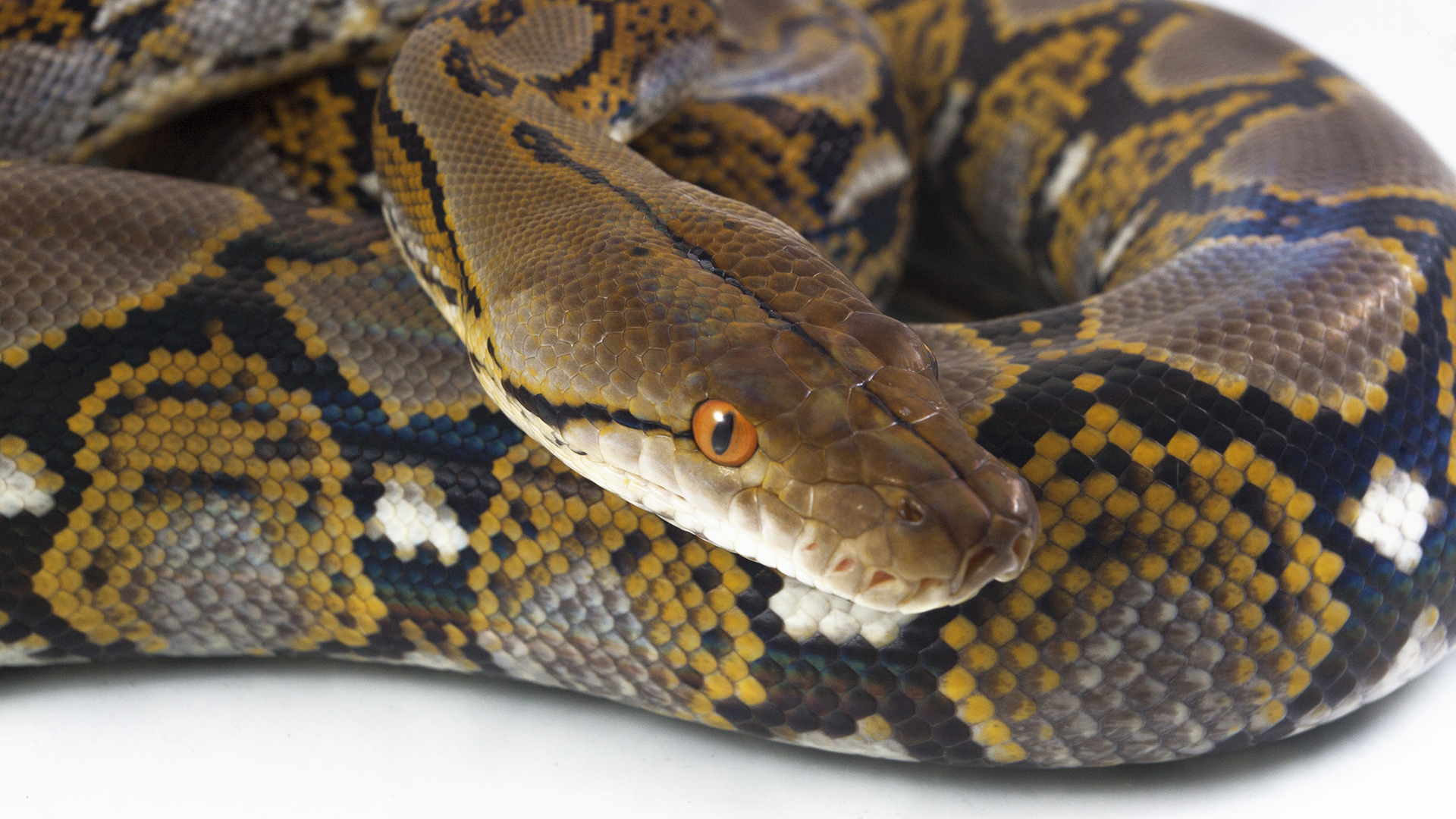Missing woman’s body discovered in the stomach of 22-foot-long python in Indonesia
A 54-year-old woman in Indonesia was killed and eaten by a massive python

The body of a woman in Indonesia was recently discovered in the stomach of a massive, 22-foot-long (6.7 meters) python, which had killed and swallowed its victim whole.
The woman, a 54-year-old grandmother named Jahrah, went missing in Jambi province on the island of Sumatra on Oct. 23, according to CNN Indonesia. Her family reported her missing when she did not return home that evening. A search party, which included her husband, was unable to locate her that night, though they found her sandals and several articles of clothing on the ground, The Guardian reported.
The next day, locals spotted a gigantic python lurking near the spot where her discarded clothing had been found. Witnesses said that the snake had a suspiciously large stomach bulge, BBC News reported. A group of villagers chased the python down and killed it. After they split open the snake's belly they discovered a body inside, which was identified as that of the missing woman, local police chief AKP S Harefa said in a statement, according to CNN Indonesia.
Related: Jaw-dropping study reveals how pythons can devour super-size prey
Indonesia is home to a huge variety of pythons, including green tree pythons (Morelia viridis), amethystine pythons (Morelia amethistina), Sumatran short-tailed pythons (Python curtus), and reticulated pythons (Malayopython reticulatus), the world’s longest species of snake.While the snake that killed the woman was not identified, it was likely a reticulated python given its sheer size. Reticulated pythons can measure up to 28.5 feet (8.7 m) long and weigh as much as 320 pounds (145 kilograms), according to Zoo Atlanta in Georgia. Like all pythons, they kill and consume their prey by slowly squeezing it to death and then swallowing it whole. “In essence they can go as large as their prey goes,” Mary-Ruth Low, a former conservation and research officer from Mandai Wildlife Group, told BBC News.
Reticulated pythons have been known to occasionally consume people. In 2018, a similar attack in which an Indonesian woman was killed and eaten by a reticulated python, made international headlines. However, experts say that these instances are exceedingly rare — only the very largest snakes are big enough to take down a human, and we aren’t easy prey to swallow thanks to our broad shoulders, which can get stuck in a snake’s throat.
Thankfully, most fully grown reticulated pythons stick to a diet of civets, birds, wild pigs and the occasional monkey, according to the Vanderbilt Museum in Long Island, New York.
Get the world’s most fascinating discoveries delivered straight to your inbox.

Joanna Thompson is a science journalist and runner based in New York. She holds a B.S. in Zoology and a B.A. in Creative Writing from North Carolina State University, as well as a Master's in Science Journalism from NYU's Science, Health and Environmental Reporting Program. Find more of her work in Scientific American, The Daily Beast, Atlas Obscura or Audubon Magazine.
 Live Science Plus
Live Science Plus





